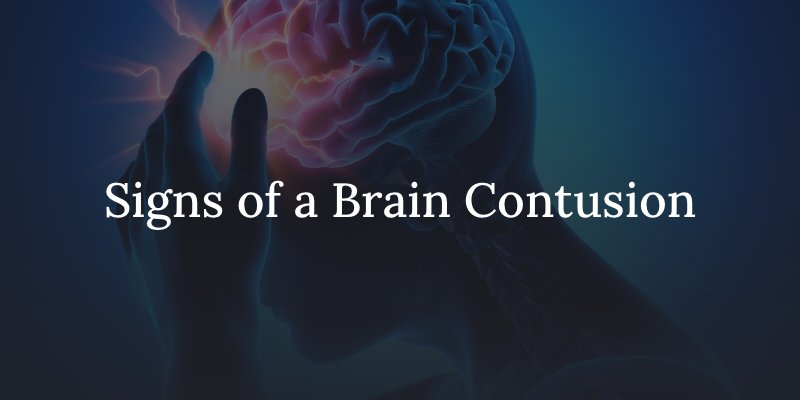Head injury resulting from trauma in a car accident, a slip-and-fall accident, a workplace injury, or any other trauma sometimes results in traumatic brain injuries (TBI). A traumatic brain injury is a harm to the delicate brain tissue caused by physical trauma rather than by a medical condition or disease. Two types of brain injuries commonly experienced by accident victims are contusions and concussions. It’s important to know the difference between the two and how to watch for symptoms of serious brain contusions after a head injury.
Contusion Vs. Concussion in Brain Injuries
A contusion is a bruise caused by blood collecting and pooling beneath the skin’s surface due to trauma damaging blood vessels and causing them to leak. When the bruise occurs inside the skull due to direct trauma to the brain it’s called a cerebral contusion. Because blood may seep from broken vessels and expand, the damage to delicate brain tissue may increase in the hours and days following the initial trauma. Contusions cause damage to the brain in two ways: the blood itself is toxic to brain cells and destroys them, and pressure from inflammation caused by the bruise damages the brain tissue. The severity of the damage from a contusion depends on the severity of the injury, whether or not the victim receives emergency treatment and the size and depth of the contusion.
A concussion also occurs from direct trauma but may result from hard shaking or a strong jolt that causes the brain to bump against the inside of the skull. While mild concussions cause temporary symptoms and typically heal within days of the injury, moderate to severe concussions impact a larger portion of the brain and may lead to dangerous cerebral contusions with lasting impacts on the brain.
Causes of Brain Contusions
Cerebral contusions occur due to trauma to the head in accidents such as the following:
- Car accidents
- Truck accidents
- Motorcycle accidents
- Pedestrian accidents
- Bicycle accidents
- Slip-and-fall or trip-and-fall accidents
- Workplace injuries
- Defective product injuries
- Contact sports injuries
- Blast injuries
- Acts of violence
Any victim of a head injury should seek medical treatment immediately and undergo monitoring and observation for days after the injury to ensure they receive prompt treatment should they exhibit signs of a contusion. Speak to a St. Louis brain injury attorney to learn about how long you have to file a personal injury claim.
Signs of a Contusion After a Head Injury
Some contusions are mild and may have unnoticeable symptoms. Others involve severe bleeding into the tissue of the brain, swelling, and damage to the brain tissue, altering its function. Symptoms of a mild to serious contusion include the following:
- Changes in cognitive ability, mood, and personality after a head injury
- Memory problems
- Difficulty concentrating
- Problems understanding speech
- Slurred speech
- Balance and coordination problems
- Numbness or tingling sensations
- Attention problems
Victims of head injuries who develop any of the above symptoms in the hours or days after an injury should seek medical treatment immediately. Healthcare providers will perform assessments and may order imaging tests such as CT scans to view the brain and locate the site of the contusion. Treatment of cerebral contusions typically involves managing the inflammation and draining excess blood and fluid to minimize the damage to the brain. When left untreated, a serious cerebral contusion can cause permanent brain damage and death. To recover damages for the pain and suffering you endured from a brain contusion, file a personal injury claim.


